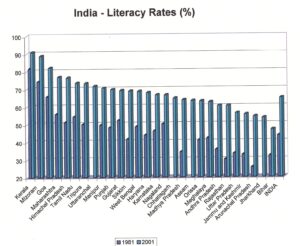How is WHO Funded? – In the realm of global health, the World Health Organization (WHO) stands as an influential guardian, committed to safeguarding the well-being of every individual across the planet. As we delve into the intriguing question – “How is WHO funded?” – we unravel the intricate financial architecture that supports this crucial organization’s operations. From voluntary contributions to assessed contributions and partnerships, the WHO’s funding model is a testament to international collaboration and dedication.
Introduction
The World Health Organization, a specialized agency of the United Nations, has been at the forefront of global health initiatives since its inception. A vital question that often arises is the backbone of WHO’s financial sustenance. Understanding how WHO is funded sheds light on its ability to address health challenges, develop policies, and respond to emergencies.
The Structure of WHO Funding
Voluntary Contributions
Voluntary contributions constitute a substantial portion of WHO’s funding. Member states, private organizations, philanthropic entities, and individuals contribute funds to support WHO’s diverse programs and projects. These contributions are flexible, allowing donors to allocate resources according to specific health priorities, research, and development initiatives.
Assessed Contributions
Assessed contributions are another critical facet of WHO’s financial framework. Member states provide funds based on their economic status and capacity. These contributions are mandatory and ensure that the organization’s core functions are adequately funded. This approach promotes equity and collective responsibility among nations.
Other Sources of Funding
Apart from voluntary and assessed contributions, WHO secures funding through various mechanisms. These include grants from international organizations, foundations, and government agencies, enhancing its capacity to address emerging health challenges and catalyze innovative solutions.
Partnerships and Collaborations
WHO’s funding is further augmented through strategic partnerships and collaborations with public and private entities. Collaborations with pharmaceutical companies, research institutions, and non-governmental organizations amplify the impact of WHO’s initiatives, fostering a holistic approach to global health.
The Role of Funding in WHO’s Impact
The availability of diverse funding sources empowers WHO to initiate and sustain impactful programs. Whether it’s eradicating infectious diseases, promoting maternal and child health, or advancing healthcare infrastructure in underserved regions, adequate funding is the bedrock upon which WHO’s achievements stand.
Challenges and Transparency
While WHO relies on multifaceted funding streams, challenges related to financial stability and transparency persist. Striking a balance between diverse funding sources while ensuring accountability and ethical considerations is an ongoing endeavor.
Navigating Financial Uncertainties
In a world marked by uncertainties, WHO navigates financial challenges with resilience. Flexibility in resource allocation, innovative financing mechanisms, and continuous dialogue with stakeholders enable the organization to maintain its role as a global health leader.
Conclusion
The question “How is WHO funded?” unravels a captivating narrative of collaboration, commitment, and complexity. The convergence of voluntary and assessed contributions, strategic partnerships, and unwavering dedication paints a vibrant picture of WHO’s financial landscape. As we peer into the heart of this funding model, we are reminded of the essential role it plays in shaping the health and well-being of nations.
FAQs
1. How much funding does WHO receive annually?
WHO’s funding varies annually and is influenced by factors such as global health priorities and emergencies. Its financial reports provide insights into the organization’s resource allocation.
2. Can individuals contribute to WHO’s funding?
Yes, individuals can contribute to WHO’s funding through donations and fundraising campaigns facilitated by the organization.
3. How does WHO ensure transparency in its funding?
WHO upholds transparency by publishing detailed financial reports, disclosing donor information, and adhering to international financial standards.
4. What role do partnerships play in WHO’s funding?
Partnerships with governments, corporations, and non-profit organizations amplify WHO’s impact by providing additional funding and resources for health programs.



